| |
|
Xiamen Oil Paintings, Wholesale Direct!
|
|
100% hand painted, 100% cotton canvas, 100% money back if not satisfaction. |
|
|
|
|
ART WORKS INDEX
A
B
C
D
E
F
G
H
I
J
K
L
M
N
O
P
Q
R
S
T
U
V
W
X
Y
Z
|
|
ARTISTS INDEX
A
B
C
D
E
F
G
H
I
J
K
L
M
N
O
P
Q
R
S
T
U
V
W
X
Y
Z
|
|
|
|
|
|
|
|
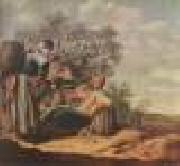 |
MOLYN, Pieter de
|
|
English-born Dutch Baroque Era Painter, 1595-1661
Dutch painter, draughtsman and etcher of English birth and Flemish descent. His father, Pieter de Molijn, came from Ghent and his mother, Lynken van den Bossche, from Brussels. It is not known why they went to England, perhaps for employment rather than to avoid religious persecution. Pieter the younger apparently remained proud of his birthplace throughout his life
|
|
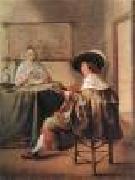 |
MOLENAER, Jan Miense
|
|
Dutch painter (b. ca. 1610, Haarlem, d. 1668, Haarlem).
Dutch painter and draughtsman. The surprisingly large oeuvre of this remarkably versatile genre painter displays an inventive symbolism, wit and humour, which identify him as the true forerunner of Jan Steen.
|
|
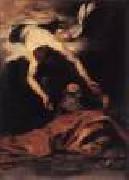 |
MOLA, Pier Francesco
|
|
Italian Baroque Era Painter, 1612-1666
Painter and draughtsman, son of (1) Giovanni Battista Mola. His most characteristic works are small, intensely romantic scenes from mythology, the Bible, and from works by the poet Torquato Tasso, set in landscapes inspired by Venetian art. Yet he also received important public commissions for frescoes and altarpieces, and in his mature work he achieved an impressive synthesis of 17th-century Roman gran maniera painting with the stronger chiaroscuro and richer palette of the 16th-century Venetian style. He was a prolific and versatile draughtsman, who drew for pleasure as well as in preparation for commissions; he was also a witty caricaturist, who mocked himself and his friends as much as more typical targets
|
|
 |
MOILLON, Louise
|
|
French Baroque Era Painter, ca.1610-1696
French painter. She was the daughter of the Protestant Nicolas Moillon (1555-1619), a painter of portraits and landscapes, picture-dealer and member of the Acad?mie de St Luc. She grew up in the St-Germain-des-Pr?s district of Paris, which, from the beginning of the 17th century, was a centre for painters from the southern Netherlands seeking refuge from religious persecution. Flemish influences appear in her still-life work, a specialization in which she followed her stepfather,
|
|
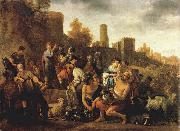 |
MOEYAERT, Claes Cornelisz.
|
|
Dutch painter (b. 1590/91, Durgerdam, d. 1655, Durgerdam)
Dutch painter, etcher and draughtsman. He was the son of an aristocratic Catholic Amsterdam merchant and moved to the city with his family in 1605. He was the most prolific of the history painters now called the PRE-REMBRANDTISTS, whose representations of biblical and mythological narratives, as well as of more recent secular history, give particular emphasis to dramatic and psychological effects. After working initially as a draughtsman and etcher, Moeyaert soon made his name as a painter. Landscapes with animals feature prominently in both his etchings and his paintings. At first he followed the lead of Adam Elsheimer, then of fellow Pre-Rembrandtists Pieter Lastman and Jan and Jacob Pynas, eventually, in the mid-1630s,
|
|
|
|
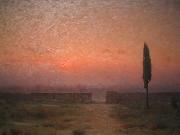 |
Modest Urgell
|
|
Modest Urgell (1839-1919) was a Spanish Catalan painter, illustrator, and playwright of comedies. He was educated at the Llotja School, in Barcelona, with Ramon Marte i Alsina and knew Gustave Courbet after a visit to Paris. Though he painted portraits, his prolific body of work is dominated by Neo-romantic landscapes, such as Fields of Loneliness (Campos de Soledad) (1894). He also acted and wrote such works for the theatre as Far from the Eyes, Close to the Heart (Lejos de los Ojos, Cerca del Corazon) (1898).
In 1910 he taught at the School of Industrial and Fine Arts in Barcelona. Whilst he was there he worked with Josep Pasce and he taught the young Joan Miro.
|
|
|
|
|
|
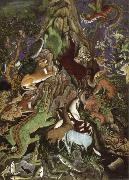 |
miskin
|
|
miskin was one of the best painters in the imperial atelier of akbar(1542 to 1605).
|
|
|
|
|
|
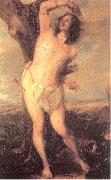 |
Miranda, Juan Carreno de
|
|
Spanish, 1614-1685
was a Spanish painter of the Baroque period. Born in Avil's in Asturias, son of a painter with the same name, Juan Carreño de Miranda. His family moved to Madrid in 1623, and he trained in Madrid during the late 1620s as an apprentice to Pedro de Las Cuevas and Bartolom Roman. He came to the notice of Velezquez for his work in the cloister of Doña Maria de Aragen and in the church of El Rosario. In 1658 Carreño was hired as an assistant on a royal commission to paint frescoes in the Alcezar palace, now the Royal Palace of Madrid. In 1671, upon the death of Sebastian de Herrera, he was appointed court painter to the queen (pintor de cemara) and began to paint primarily portraits. He refused to be knighted in the order of Santiago, saying Painting needs no honors, it can give them to the whole world. He is mainly recalled as a painter of portraits. His main pupils were Mateo Cerezo, Cabezalero, Donoso, Ledesma y Sotomayor. He died in Madrid. Noble by descent, he had an understanding of the workings and psychology of the royal court as no painter before him making, his portraits of the Spanish royal family in an unprecedented documentary fashion
|
|
|
|
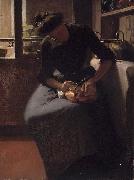 |
Minerva Josephine Chapman
|
|
(1858 - 1947) was an American painter. She was known for her work in miniature portraiture, landscape, and still life.
She was born in Sand Bank, New York and grew up in Chicago, Illinois. She studied at a number of institutions including Mount Holyoke College (where she graduated from in 1880) and the Art Institute of Chicago. She lived and studied in Paris from the late 1880s to 1915, and again after the first world war, where she established her reputation as an artist. She retired to Palo Alto, California and died at the age of 88.
|
|
 |
MINDERHOUT, Hendrik van
|
|
Flemish painter (b. 1632, Rotterdam, d. 1696, Antwerpen).
Dutch painter, active in the southern Netherlands. For unknown reasons, he was known as the 'Green Knight of Rotterdam'. In 1644 he married Margareta van den Broecke, and in 1652 he went to Bruges, where in 1663 he entered the Guild of St Luke; the marine painting that he submitted to the Guild to become a member used to be displayed in the Salle d'Acad?mie as a companion piece to the picture submitted by Rubens on his entry to the Guild. In 1672 van Minderhout moved to Antwerp, where he was admitted to the Guild the same year and where, in return for exemption from all obligations as a guild member, he presented a large canvas representing an Eastern seaport. In 1673 he married his second wife, Anna-Victoria Claus. They had five children, including two sons, Antoon van Minderhout (b 26 Sept 1675; d 22 Dec 1705) and Willem August van Minderhout (b 28 Aug 1680; d 31 June 1752), who also became painters. Hendrik van Minderhout painted mostly sea and harbour views, in the tradition of Jan Baptist Weenix and Johannes Lingelbach. His subjects included the port of Antwerp, as well as imaginary views of Mediterranean harbours and oriental seaports
|
|
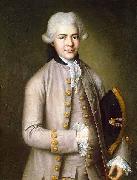 |
Mina Kolokolnikov
|
|
1708e-1775e) was a Russian painter and teacher.
Kolokolnikov was born in the village of Kravotyn in Tver gubernia. He was a serf of the Pafnutievo-Borovsky Monastery, and learnt the art of portrait painting from Ivan Nikitich Nikitin and Louis Caravaque; he also studied icon painting with Vasily Vasilevsky.
He is known to have assisted in the decoration of the palace at Tsarskoye Selo, and to have lived for a time in St. Petersburg, where one of his pupils was Trifon Anisimov. One of his portraits is in the Tver Regional Picture Gallery. He worked in the studio of Alexei Antropov; consequently, it is often difficult to tell Kolokolnikov's works from Antropov's, as both have very similar technique.
Kolokolnikov's brothers Ivan and Fedot were also painters.
|
|
|
|
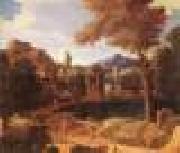 |
MILLET, Francisque
|
|
French Baroque Era Painter, 1642-1679
French painter. The little that is known about his life is derived from the chapter on Flemish, German and Dutch painting in Le Comte's work (1699). His oeuvre remains ill-defined, in part because he seems never to have signed his paintings and in part because after his death (by poisoning) both his son Jean Millet (c. 1666-1723) and later his grandson Joseph Millet (c. 1688-1777) took the name Francisque and continued to paint landscapes in his style. The firmest point of reference for attributions to Millet is a series of 28 engravings after his works made by one Theodore, possibly a pupil. They are all landscapes, some with religious, mythological or heroic genre subjects,
|
|
|
|
|
|
|
|
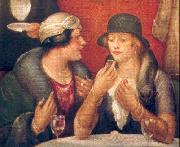 |
Miller, Kenneth Hayes
|
|
American Painter, 1876-1952
American painter and teacher. He studied with Kenyon Cox and William Merritt Chase before travelling to Europe in 1899. In the same year he also joined the staff of the New York School of Art. In 1911 he moved to the Art Students League, where he taught intermittently until 1951. As leader of the 14th Street school of urban genre painting, Miller was one of the most influential teachers of American artists since Robert Henri; his students included Isabel Bishop, Edward Hopper, George Bellows, Reginald Marsh and George Tooker (b 1920). His early work consists of romantic depictions of nude or semi-nude figures inhabiting dreamlike landscapes
|
|
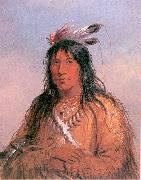 |
Miller, Alfred Jacob
|
|
American Painter, 1810-1874
American painter. From 1831-2 he studied with the portrait painter Thomas Sully in Philadelphia, PA. In 1832 he went to France, where he studied in Paris at the Ecole des Beaux-Arts. He also visited Rome before returning to Baltimore, to open a portrait studio in 1834. Three years later Miller moved to New Orleans, LA, and was engaged by Captain William Drummond Stewart to accompany an expedition to the Rocky Mountains. The journey brought Miller into close contact with the American Indians, whose hunting and social customs he depicted in 200 watercolour sketches, and with the Far West fur trappers at their annual trading gatherings. He was one of the first artists to leave a detailed visual account of the life of the American mountain men (see WILD WEST AND FRONTIER ART). Miller's Rocky Mountain paintings are among the most romantic images of the American West ever created. His works are often panoramic and dramatic, yet he was equally adept at depicting charming, intimate scenes. His free, vigorous painting style brings to life both the American Indian and the rugged pioneer. Such paintings as the Lost Greenhorn
|
|
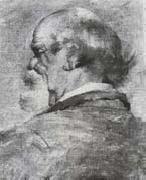 |
Miles Evergood
|
|
Australian Painter, 1871-1939, was an Australian artist. Evergood was born Myer Blashki in Melbourne, eleventh child of Philip Blashki, jeweller, and his wife Anna, nee Imergud. He studied for a while at the national gallery school under Bernard Hall between 1893 and 1895. He exhibited at the Victorian Artists Society, and the Royal Art Society, Sydney, before leaving for the United States in 1898. He worked principally in New York, with frequent visits to Europe, for about 30 years, establishing a good reputation as a painter. He changed his name to Miles Evergood while in the United States. Evergood returned to Australia about the end of 1931 and worked for a year in Queensland and became a member of the Royal Queensland Art Society. He then went to Sydney and Melbourne holding exhibitions of his work, and died of cancer in Melbourne on 3 January 1939. Evergood was a capable artist, who mostly painted landscapes in oil with affinities to the post impressionists.
|
|
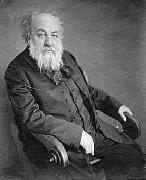 |
Mikolas Ales
|
|
(November 18, 1852 in Mirotice near Pisek - July 10, 1913 in Prague) was a Czech painter.
Ales was born in 1852 in Mirotice into a relatively rich family that was in debt at the time. He was taught history by his brother Frantisek until his death in 1865; he expressed interest in painting at an early age. In 1879 he got married to Marina Kailova and moved to Italy where he continued his career in painting. He moved back to Prague working on the new artwork at the Prague National Theatre; he died in Prague at the age of 60.
Ales is estimated to have had over 5,000 published pictures, he has painted for everything from magazines to playing cards to textbooks. His paintings were not publicized too widely outside Bohemia, but many of them are still available, and Mikolas Ales is certainly regarded as one of the country's best painters
|
|
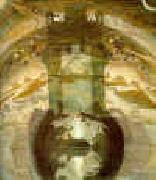 |
Mikolajus Ciurlionis
|
|
1875-1911 Lithuanian
Mikolajus Ciurlionis Locations
Lithuanian painter and composer. He studied with Noskowski in Warsaw and with Jadassohn and Reinecke at the Leipzig Conservatory (1901). His music makes use of invented modes, colourful harmony and autonomous rhythms; he wrote much for the piano as well as orchestral and chamber music. He was also famous as a painter.
|
|
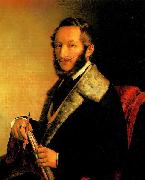 |
Miklos Barabas
|
|
(February 10, 1810 in Mărcuşa, now Romania - February 12, 1898 in Budapest) was a Hungarian painter. He his mostly known for his portrait paintings.
He was born in Kezdimerkosfalva. He spent most of his life in Pest, where he was director of the art society from 1862 until his death. He became a member of the Parliament of Hungary in 1867. He died in Budapest.
|
|
|
|
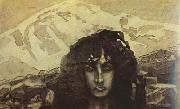 |
Mikhail Vrubel
|
|
Russian Symbolist Painter, 1856-1910
Russian painter and draughtsman. He was a pioneer of modernism, and his highly innovative technique broke with the traditions of the Academy of Arts in St Petersburg, where he had been a brilliant student; at the same time he felt dissociated from the social consciousness of The Wanderers.
|
|
|
|
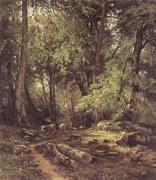 |
Mikhail Klodt
|
|
St. Petersburg,a descendant of an art dynasty1832-1902
|
|
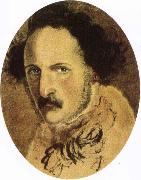 |
mikhail glinka
|
|
Period: Romantic (1820-1869)
Country: Russia
Born: June 01, 1804 in Novospasskoye, Smolensk, Russia
Died: February 15, 1857 in Berlin, Germany
Genres: Chamber Music, Keyboard Music, Miscellaneous Music, Opera, Orchestral Music, Vocal Music
|
|
 |
MIJTENS, Jan
|
|
Dutch Baroque Era Painter, ca.1614-1670
Nephew of Daniel Mijtens I. He was the son of Daniel's elder brother David, a saddle-maker in The Hague. Jan may have learnt to paint from his uncle Isaac Mijtens. After 1634 he may have trained with his uncle Daniel, who had by then returned to The Hague; Jan married Daniel's daughter Anna in 1642. In 1639 he had been admitted to The Hague's guild of painters, of which he became a governor in 1656. In the latter year he helped to found the painters' society De Pictura; from 1667-8 he was a governor of this society and from 1669-70 its dean.
|
|
|
|
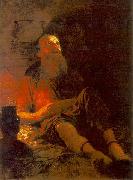 |
Mihaly Zichy
|
|
(Hungarian pronunciation: [ˈmihaːj ˈzitʃi]; German: Michael von Zichy; October 15, 1827, Zala, Hungary - February 28, 1906, St. Petersburg, Russia) was a Hungarian painter and graphic artist.
Mihely Zichy was a significant representative of Hungarian romantic painting. During his law studies in Pest from 1842, he attended Jakab Marastoni's school as well. In Vienna he was Waldmeller's pupil in 1844. "Life Boat", his first major work, comes from this time. On Waldmeller's recommendation, he became an art teacher in St. Petersburg. He swore allegiance to freedom by painting the portrait of Lajos Batthyeny, the first Hungarian prime minister, in 1849. From 1850 onwards, he worked as a retoucher, but he also did pencil drawings, water colours and portraits in oil. The series on the Gatchina hunting ordered by the Russian tsar raised him to a court artist. He founded a society to support painters in need. "Autodafe" on the horrors of Spanish inquisition was painted in 1868. He travelled around Europe in 1871, and settled down in Paris in 1874.
He painted "Queen Elisabeth is Laying Flowers by the Coffin of Ferenc Deek" on Treffort's order. "Drinking Bout of Henry III", his next large scale picture came from 1875. "The Victory of the Genius of Destruction" painted for the Paris Exhibition was banned by French authorities because of its daring antimilitarist message. He left Paris in 1881 and returned to St. Petersburg after short stays in Nizza, Vienna and Zala (village). From this time onwards, he was mostly engaged in illustrations ("The Tragedy of Man" by Made - h, 1887, and twenty-four ballads of Jenos Arany, 1894 - 98).
|
|
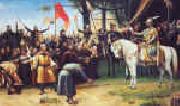 |
Mihaly Munkacsy
|
|
1844-1900
Hungarian
Mihaly Munkacsy Locations
Munkacsy started to paint during the years he spent in Arad as a joiner. With the help of partons be studied at the Viennese, Munich and Dusseldorf academies. Munkacsy painted his first major work, the outstanding "The Condemned Cell" in D??sseldorf, in 1872, together with his friend Laszlo Paal, he moved to Paris, where be lived until the end of his life. Munkacsy painted his genres in the style of realism between 1873 and 1875: "Midnight Ramblers", "Farewell". "Churning Woman", "Woman Carryng Brushwood", and "Pawnshop" were the zenith of his career. He married the widow of Baron de Marches in 1874, and his style changed from that time on. Departing from the typical subjects of realism, be produced colourful salon paintings and still-lifes. This was the period when be also turned to ladscape painting; his growing interest is marked by such great paintings as "Dusty Road". "Corn Field", and "Walking in the Woods". The assimilation of Laszlo Paal's style is apparent in the landscapes painted during the 1880s, such as "Avenue" and "The Colpach Park". His realist portraits - e.g. of Franz Liszt and Cardinal Haynald - were also born around this time, together with his religions paintings, such as "Christ in front of Pilate", "Golgotha" and later, "Ecce homo".
Towards the end of his career he painted two monumental works: "Hungarian Conquest" for the House of Parliament and a fresco entitled "Apotheosis of Renaissance, for the ceiling Kunsthistoriches. Museum in Vienna.
|
|
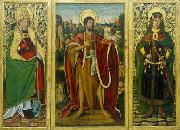 |
Miguel Ximenez
|
|
painted Saint John the Baptist; Saint Fabian and Saint Sebastian in 1494
|
|
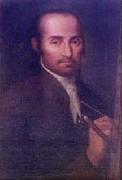 |
Miguel Cabrera
|
|
(1695-1768) was an indigenous Zapotec painter during the Viceroyalty of New Spain, today's Mexico. During his lifetime, he was recognized as the greatest painter in all of New Spain.
He was born in Antequera, today's Oaxaca, Oaxaca, and moved to Mexico City in 1719. He may have studied under the Rodreguez Juerez brothers or Jose de Ibarra.
Cabrera was a favorite painter of the Archbishop and of the Jesuit order, which earned him many commissions. His work was influenced by Bartolome Esteban Murillo and the French painting of his time.
While Miguel is most famous for his Casta paintings and his portrait of the poet Sor Juana, he also executed one of the first portraits of St. Juan Diego. In 1752 he was permitted access to the icon of Our Lady of Guadalupe to make three copies: one for Archbishop Jose Manuel Rubio y Salinas, one for the Pope, and a third to use as a model for further copies. In 1756 he created an important early study of the icon of Our Lady of Guadalupe, Maravilla americana y conjunto de raras maravillas observadas con la direccien de las reglas del arte de la pintura
The essential purpose of Maravilla Americana was to affirm the 1666 opinions of the witnesses who swore that the image of the Virgin was of a miraculous nature. However, he also elaborated a novel opinion: the image was crafted with a unique variety of techniques. He contended that the Virgin's face and hands were painted in oil paint, while her tunic, mandorla, and the cherub at her feet were all painted in egg tempera. Finally, her mantle was executed in gouache. He observed that the golden rays emanating from the Virgin seemed to be of dust that was woven into the very fabric of the canvas, which he asserted was of "a coarse weave of certain threads which we vulgarly call pita," a cloth woven from palm fibers.
In 1753, he founded the second Academy of Painting in Mexico City and served as its director.
|
|
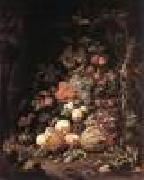 |
MIGNON, Abraham
|
|
Dutch Baroque Era Painter, 1640-1679
Dutch painter, was born at Frankfurt. His father, a merchant, placed him under the still-life painter Jacob Marrel, by whom he was taken to the Netherlands about 1660. He then worked under Jan Davidszoon de Heem at Utrecht, where in 1675 he married the daughter of the painter Cornelis Willaerts. Sibylle Merian (1647-1717), daughter of the engraver Matthew Merian, became his pupil and achieved distinction as a flower painter. He died at Utrecht. Mignon devoted himself almost exclusively to flowers, fruit, birds and other still-life, though at times he also attempted portraiture. His flower pieces are marked by careful finish and delicate handling. His favourite scheme was to introduce red or white roses in the centre of the canvas and to set the whole group of flowers against a dark background. Nowhere can his work be seen to better advantage than at the Dresden Gallery, which contains fifteen of his paintings, twelve of which are signed. Six of his pictures are at the Louvre, four at the Hermitage, and other examples are to be found at the museums of Amsterdam,
|
|
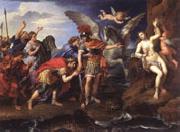 |
MIGNARD, Pierre
|
|
French Baroque Era Painter ,
b. 1612, Troyes, d. 1695, Paris
called "Le Romain" to distinguish him from his brother Nicolas, was a French painter. He was born at Troyes, and came of a family of artists; he also needs to be distinguished from his nephew Pierre (1640-1725), often called "Pierre II" or "Le Chevalier". In 1630 he left the studio of Simon Vouet for Italy, where he spent twenty-two years, and made a reputation which brought him a summons to Paris. Successful with his portrait of the king, and in favour with the court, Mignard pitted himself against Le Brun, declined to enter the Academy of which he was the head, and made himself the centre of opposition to its authority. The history of this struggle is most important, because it was identical, as long as it lasted, with that between the old gilds of France and the new body which Colbert, for political reasons, was determined to support. Portrait of Louise de Kerouaille, Duchess of PortsmouthShut out, in spite of the deserved success of his decorations of the cupola of Val de Grace (1664), from any great share in those public works, the control of which was the attribute of the new Academy, Mignard was chiefly active in portraiture. Turenne, Moliere, Bossuet, Maintenon (Louvre), La Valliere, Sevigne, Montespan, Descartes (Castle Howard), all the beauties and celebrities of his day, sat to him. His readiness and skill, his happy instinct for grace of arrangement,
|
|
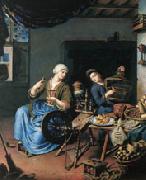 |
MIERIS, Willem van
|
|
Dutch Baroque Era Painter , b. 1662, Leiden, d. 1747, Leiden, Dutch painter, was the son of Frans van Mieris sr.. His works are extremely numerous, being partly imitations of the paternal subjects, or mythological episodes, which Frans habitually avoided.
|
|
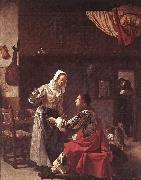 |
MIERIS, Frans van, the Elder
|
|
Dutch painter (b. 1635, Leiden, d. 1681, Leiden).
was a Dutch genre and portrait painter. The leading member of a Leiden family of painters, his sons Jan (1660-1690) and Willem (1662?C1747) and his grandson Frans van Mieris the Younger (1689?C1763) were also accomplished genre painters. Frans was the son of Jan Bastiaans van Mieris, a goldsmith, carver of rubies and diamond setter at Leiden. His father wished to train him to his own business, but Frans preferred drawing, and took service with Abraham Toorenvliet, a glazier who kept a school of design. In his father's shop he became familiar with the ways and dress of people of distinction. His eye was fascinated in turn by the sheen of jewelry and stained glass; and, though he soon gave up the teaching of Toorenvliet for that of Gerard Dou and Abraham van den Tempel, he acquired a manner which had more of the finish of the exquisites of the Dutch school than of the breadth of the disciples of Rembrandt. It should be borne in mind that he seldom chose panels of which the size exceeded 12 to 15 inches, and whenever his name is attached to a picture above that size we may surely assign it to his son Willem or to some other imitator. Unlike Dou when he first left Rembrandt, or Jan Steen when he started on an independent career, Mieris never ventured to design figures as large as life. Characteristic of his art in its minute proportions is a shiny brightness and metallic polish. The subjects which he treated best are those in which he illustrated the habits or actions of the wealthier classes; but he sometimes succeeded in homely incidents and in portrait, and not unfrequently he ventured on allegory. He repeatedly painted the satin skirt which Ter Borch brought into fashion, and he often rivalled Ter Borch in the faithful rendering of rich and highly-coloured woven tissues. But he remained below Ter Borch and Metsu, because he had not their delicate perception of harmony or their charming mellowness of touch and tint, and he fell behind Gerard Dou, because he was hard and had not his feeling for effect by concentrated light and shade. In the form of his composition, which sometimes represents the framework of a window enlivened with greenery, and adorned with bas-reliefs within which figures are seen to the waist, his model is certainly Dou. It is a question whether Houbraken has truly recorded this master's birthday. One of his best-known pieces, a party of ladies and gentlemen at an oyster luncheon, in the Hermitage at St Petersburg, bears the date of 1650. Celebrated alike for composition and finish, it would prove that Mieris had reached his prime at the age of fifteen. Another beautiful example, the "Doctor Feeling a Lady's Pulse" in the gallery of Vienna, is dated 1656; and Waagen, in one of his critical essays, justly observes that it is a remarkable production for a youth of twenty-one. In 1657 Mieris was married at Leiden in the presence of Jan Potheuck, a painter, and this is the earliest written record of his existence on which we can implicitly rely. Of the numerous panels by Mieris, twenty-nine at least are dated--the latest being an allegory, long in the Ruhl collection at Cologne, illustrating what he considered the kindred vices of drinking, smoking and dicing, in the year 1680. Mieris had numerous and distinguished patrons. He received valuable commissions from Archduke Leopold, the elector-palatine, and Cosimo III de' Medici, grand-duke of Tuscany. His practice was large and lucrative, but never engendered in him either carelessness or neglect. If there be a difference between the painter's earlier and later work, it is that the former was clearer and more delicate in flesh, whilst the latter was often darker and more livid in the shadows. When he died his clients naturally went over to his son Willem, who in turn bequeathed his painting-room to his son Frans. But neither Willem nor Frans the younger equalled Frans the elder.
|
|
|
|
|
|
 |
Miel, Jan
|
|
Dutch Baroque Era Painter, ca.1599-1664
Flemish painter, active in Italy. Miel must have arrived in Rome in the early 1630s; he immediately came under the influence of Pieter van Laer (il Bamboccio) and the BAMBOCCIANTI. His earliest paintings of bambocciate (low-life scenes) are the Bowls Players (1633; Paris, Louvre) and its companion piece The Cobbler (Besan?on, Mus. B.-A. & Arch?ol.). Shortly after his arrival in Rome, Miel joined the Schildersbent, a confraternity of Netherlandish artists, and was given the nickname 'Bieco' ('threatening look'). His presence in Rome is documented from 1636 to 1658, when he moved to Turin and entered the service of Charles-Emanuel II, Duke of Savoy. Other early paintings that can be attributed to the 1630s include Halt at the Inn (Marseille, Mus. B.-A.) and Hunters' Rest (Warsaw, N. Mus.). Both are reworkings, in their subject-matter and composition, of contemporary paintings by van Laer
|
|
|
|
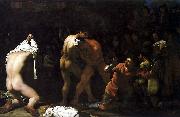 |
Michiel Sweerts
|
|
(29 September 1618-1664), also known as Michael Sweerts, was a Flemish painter of the Baroque period, active in Rome (1645-1656) in the style of the Bamboccianti. The Bamboccianti were known for depicting genre scenes of daily life, but Sweerts's contributions to this genre display greater stylistic mastery and social-philosophical sensitivity than many of his colleagues in this "school." Highly successful in Rome during his years there, Sweerts's reputation suffered a severe collapse not long after his death, lasting centuries; but thanks especially to the 2002 international monographic exhibition devoted entirely to him, Michael Sweerts: 1618-1664, he has begun once again to enjoy the esteem his work clearly merits.
Born in Brussels, he arrived in Rome in 1646, and rapidly moved into the circle of Flemish painters associated with Pieter van Laer (leader of the so-called Bamboccianti painters) and that resided near Santa Maria del Popolo. In 1647, he attended meetings of the Accademia di San Luca, although not as a member. Despite the fragmentary nature of evidence pertaining to his career in Rome and the post-mortem eclipse of his reputation, we know that Sweerts succeeded in creating for himself a sufficiently exalted reputation in the city so as to enter into the service of the ruling papal family itself, the Pamphilj, more specifically, Camillo Pamphilj, nephew of reigning Pope Innocent X who, at the encouragement of Camillo, bestowed upon Sweerts the papal title of Cavaliere di Cristo, the same honor enjoyed by the likes of Gian Lorenzo Bernini and Francesco Borromini. Despite working in the highest echelons of papal patronage in Rome, sometime between 1652 and 1654, for reasons unknown Sweerts left the Eternal City and returned to the North, and by 1656, he had returned to Brussels, where he joined the painter's guild. He joined the Paris Foreign Missions Society as a lay brother and became a devout Christian. In 1658 he made the guild a self portrait as a farewell gift and moved to Amsterdam, where he would oversee the building of a ship for travel with the aforementioned Missions Étrangeres to Palestine.
|
|
|
|
|
|
|
|
|
| Wholesale China Oil Painting Wholesale Oil Painting China Xiamen Portrait Reproduction on canvas Chinese Oil Painting Wholesale USA Oil Painting |
|
|
|
|
|